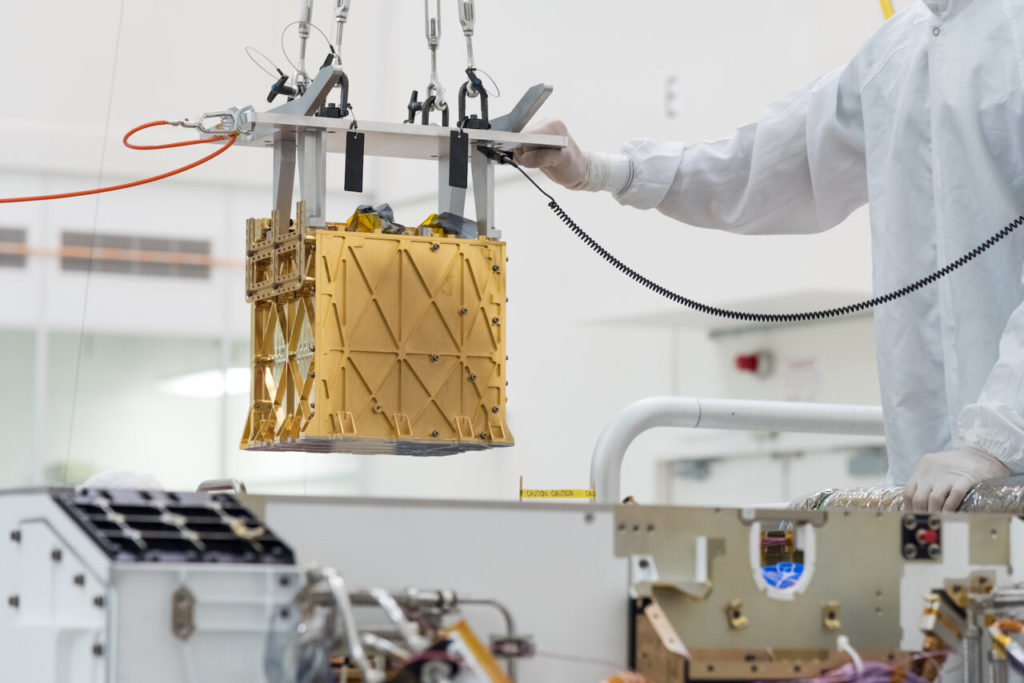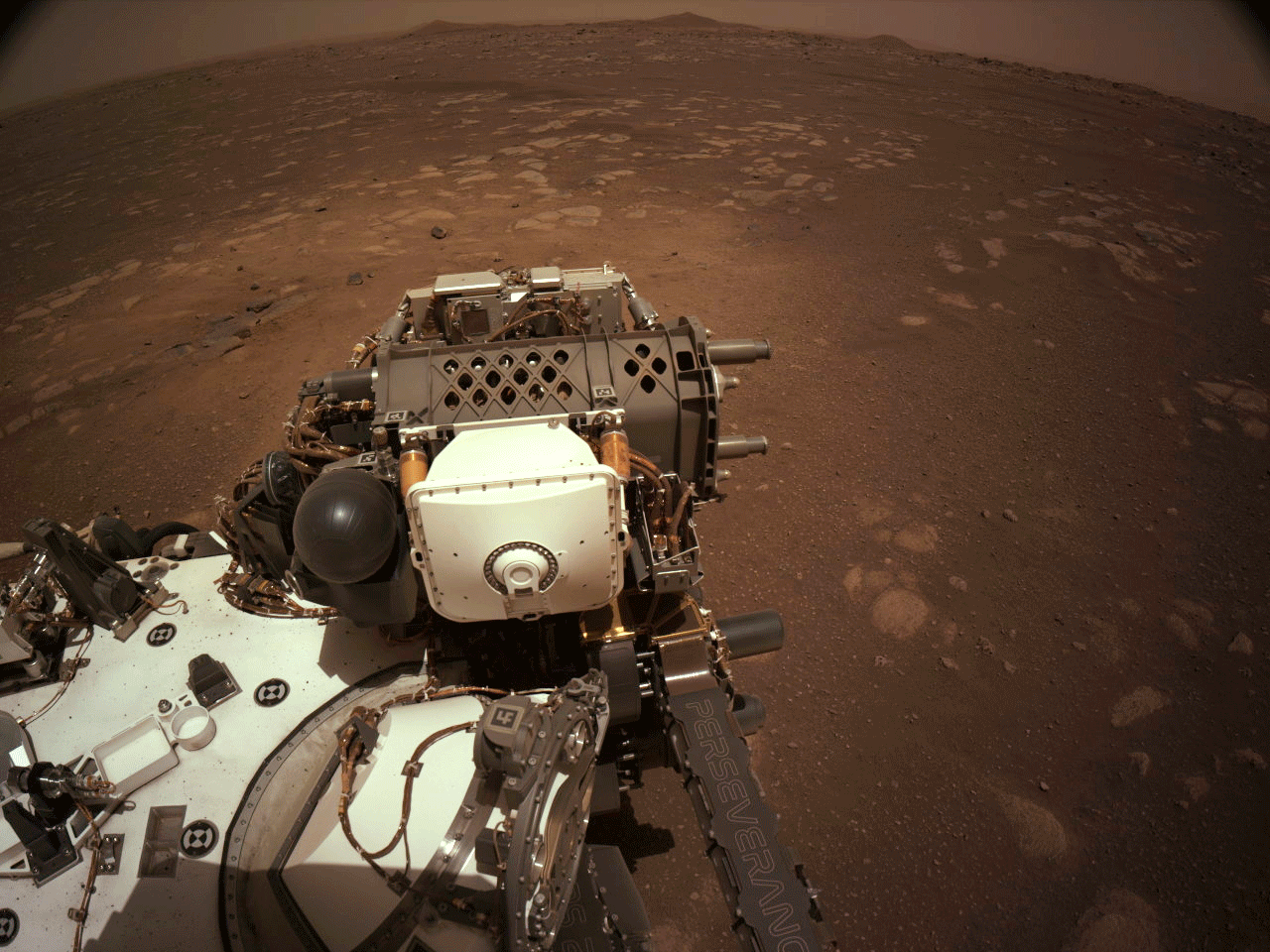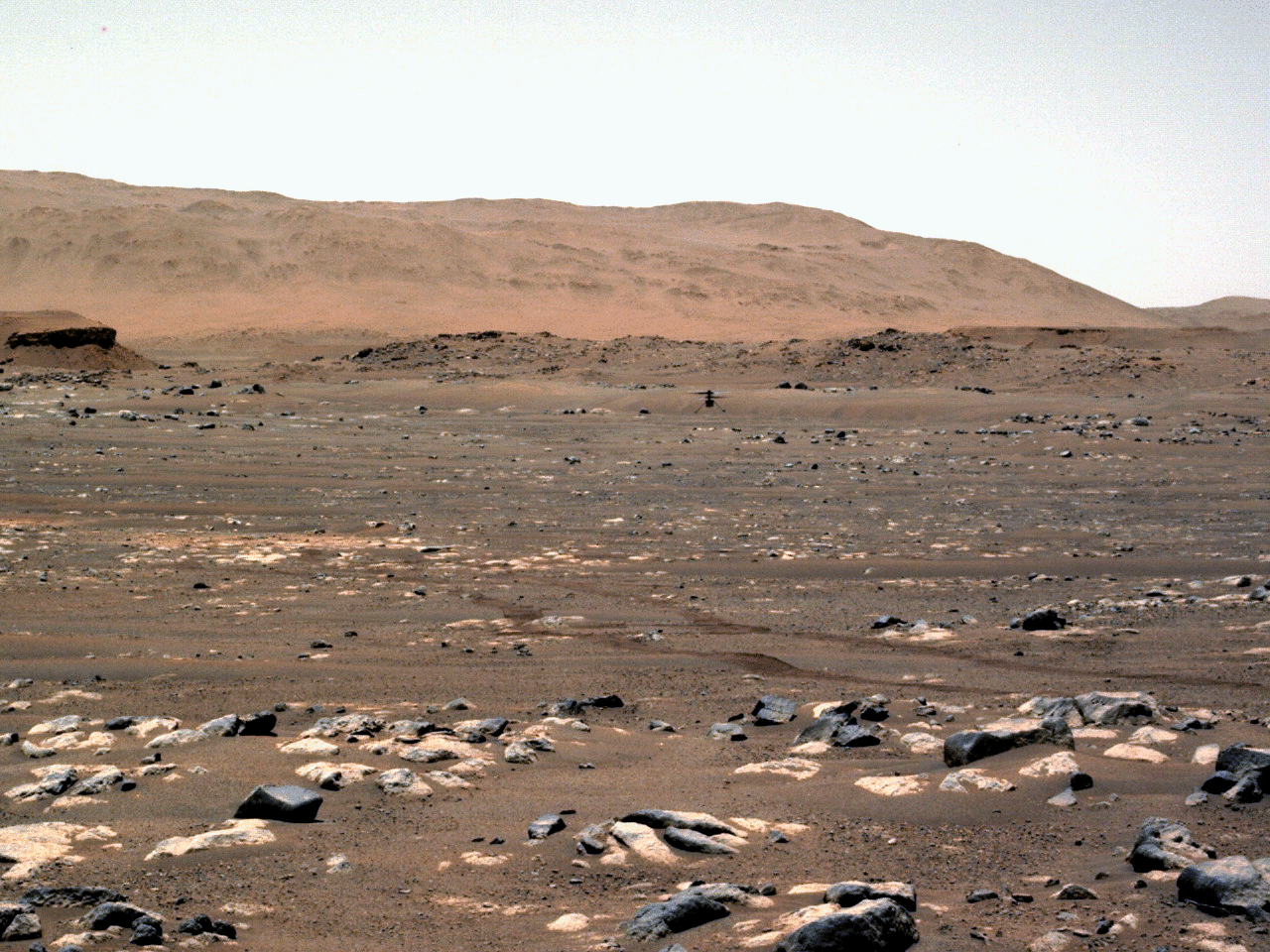After arriving on Mars in February 2021, NASA’s Perseverance Rover had several groundbreaking achievements. In early April, the Ingenuity Helicopter became the first aircraft in history to make a controlled flight on another planet, hovering over the Jezero Crater twice. Soon after, on April 21, it was MOXIE’s turn. Short for the “Mars Oxygen In-Situ Resource Utilization Experiment”, the novel instrument, with 3D printed parts, converted the planet’s thin, carbon dioxide-rich atmosphere into oxygen for the first time. Straight out of science fiction novels like The Martian, the technology could help future missions survive in off-Earth environments using abundant elements found on-site.

MOXIE being installed in Perseverance: Technicians at NASA’s Jet Propulsion Laboratory lower MOXIE into the belly of the Perseverance rover. Image courtesy of NASA/JPL-Caltech.
NASA’s newest six-wheeled robot encountered a hostile habitat on the Martian surface. Even though it is filled with clouds and wind gusts just like Earth, the atmosphere lacks a robust ozone layer, so the surface is bombarded with ultraviolet solar radiation. Moreover, Mars contains plenty of carbon dioxide (96%) and very little oxygen. At less than 1%, it barely compares to Earth, where atmospheric oxygen soars at 21%. An oxygen generator like MOXIE could thrive on other planets, evolving into bigger and more efficient platforms to allow astronauts to create their own air to breathe and provide oxygen to burn rocket fuel needed to return humans to Earth.

Images were taken by Perseverance’s Navigation Cameras on March 3, 2021, showing parts of its robotic arm during its first checkout after landing on Mars. Image courtesy of NASA/JPL-Caltech.
Traveling aboard the Perseverance, MOXIE is a toaster-sized device made with heat-tolerant materials that can withstand a temperature of approximately 1,470° Fahrenheit (800° Celsius), needed for the conversion process to be successful. It is made with 3D printed nickel alloy components, which heat and cool the gases flowing through it, and a lightweight aerogel that helps hold in the heat. A thin gold coating outside MOXIE reflects infrared heat, keeping it from radiating outward and potentially damaging other parts of Perseverance.
NASA’s Associate Administrator at the Space Technology Mission Directorate (STMD), Jim Reuter, described the achievement as a “critical first step at converting carbon dioxide to oxygen on Mars.” Although MOXIE still has plenty of work ahead, Reuter said the results from this technology demonstration offer a great deal of promise, especially as plans for a Mars crewed mission move forward.
To carry out the critical process, MOXIE basically takes in the carbon dioxide from the Martian atmosphere, then electrochemically splits the carbon dioxide molecules to produce pure oxygen, separating it from the carbon monoxide, in a process equivalent to running a fuel cell in reverse. The oxygen is analyzed for purity before being vented back out to the Mars atmosphere along with the carbon monoxide and other exhaust products.
After a two-hour warmup period on-site, MOXIE began producing oxygen at a rate of six grams per hour. This was reduced twice during the run to assess the status of the instrument. After an hour of operation, the total oxygen produced was about 5.4 grams, enough to keep an astronaut healthy for close to ten minutes of normal activity. The small experimental device is designed to generate up to 10 grams of oxygen per hour, but the oxygen production was “quite modest during its first operation,” stated NASA.

After a two-hour warmup period, MOXIE began producing oxygen at a rate of 6 grams per hour. Image courtesy of MIT’s Haystack Observatory.
For rockets or astronauts, oxygen is key, so by separating oxygen atoms from carbon dioxide molecules, MOXIE ensures oxygen production. Rockets need to operate in space, where there is no oxygen, which means they need to carry not just fuel but also their own oxygen supply. To burn its fuel, a rocket must have more oxygen by weight, and getting four astronauts off the Martian surface on a future mission would require approximately 15,000 pounds (seven metric tons) of rocket fuel and 55,000 pounds (25 metric tons) of oxygen, said MOXIE’s principal investigator, Michael Hecht of the Massachusetts Institute of Technology (MIT)’s Haystack Observatory.
Still, hauling 55,000 pounds of oxygen from Earth to Mars would be an arduous task. If future explorers will depend on producing propellants on Mars to make the trip home, finding a sustainable, low-cost and efficient way to convert local resources to oxygen will be critical to any mission’s success. Astronauts living and working on Mars will also require oxygen to breathe, although far less than a rocket to take off. Hecht estimates that the astronauts who spend a year on the surface will use one metric ton between them. In comparison, a human on Earth breathes about 740 kilograms of oxygen per year.
Although the technology demonstration is just getting started, MOXIE could pave the way for “science fiction to become science fact,” declared NASA. This technology demonstration was designed to ensure the instrument survived the launch from Earth, a nearly seven-month journey through deep space, and a touchdown with Perseverance. MOXIE is expected to extract oxygen at least nine more times over the course of a Martian year, that’s nearly two years on Earth.
The oxygen-production runs will happen in three phases. The first phase will check out and characterize the instrument’s function. In contrast, the second phase will run the instrument in varying atmospheric conditions, such as different times of day and seasons. In the third phase, Hecht said, “we’ll push the envelope,” trying new operating modes or introducing “new wrinkles” such as a run to compare operations at three or more different temperatures.
Taking advantage of elements on off-Earth environments is what Trudy Kortes, Director of Technology Demonstrations within STMD, calls “living off the land,” also known as in-situ resource utilization, the answer to human survival in space exploration. Much like many companies and research institutions are exploring alternative construction techniques to build housing structures on other planets by relying on local regolith feeding material, turning an abundant substance like carbon dioxide into oxygen is one the most forward-looking experiments if humans are planning to travel to the Moon, Mars and beyond in the next decades. To learn more about the other ways that 3D printing is paving the future for humans in space, check out 3DPrint.com’s Space Zone.
Subscribe to Our Email Newsletter
Stay up-to-date on all the latest news from the 3D printing industry and receive information and offers from third party vendors.
You May Also Like
US Army Corps of Engineers Taps Lincoln Electric & Eaton for Largest 3D Printed US Civil Works Part
The Soo Locks sit on the US-Canadian border, enabling maritime travel between Lake Superior and Lake Huron, from which ships can reach the rest of the Great Lakes. Crafts carrying...
Construction 3D Printing CEO Reflects on Being Female in Construction
Natalie Wadley, CEO of ChangeMaker3D, could hear the words of her daughter sitting next to her resounding in her head. “Mum, MUM, you’ve won!” Wadley had just won the prestigious...
Blue Laser-powered M600 3D Printer Launched by Meltio
Founded in 2019 as a joint venture between Additec and Sicnova, metal 3D printer OEM Meltio develops and manufactures high-performance and easy-to-use metal 3D printing solutions that use its patented wire-laser metal...
3D Printed Storage Tanks Cut Material Costs by 25%
In a previous article, “Concrete Dreams: Let’s Print Money, Not Houses,” we discussed how the spotlight on 3D printing homes might be misplaced. Bollards, pedestrian bridges, and concrete tanks could...































